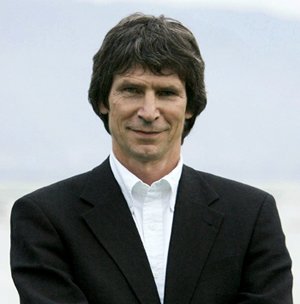As the coordinator of Sundays at Sunny’s, one of New York City’s longest-running literary reading series, I have shot the breeze with hundreds of my fellow authors. Their most common complaint—hands down—is this: “My publicist/publisher doesn’t do anything for me.” Most writers harbor secret hopes that their books will become breakout best-sellers, and it can be quite a shock to find that works that required years or even decades of great effort often flicker into print, then disappear without a trace.

We writers experience our little corners of the publishing world, but the overall system often seems murky, if not downright impenetrable. If we had access to the bigger picture, we’d discover that the inadequate promotion and marketing of most books does not necessarily represent a failure of one publicist or publishing house. In fact, to borrow a saying from the world of computer programming, That’s not a bug—it’s a feature.
In his latest book, Merchants of Culture: The Publishing Business in the Twenty-First Century, published last September by Polity Press, John B. Thompson elucidates the complexity of the book-publishing industry. A professor of sociology at the University of Cambridge in the United Kingdom, Thompson is one of very few writers and academics who have attempted to examine publishing in a truly multifaceted and comprehensive way. His study of academic publishing, Books in the Digital Age, was published in 2005. Merchants of Culture, a refreshingly accessible read, demystifies the world of general-interest trade publishing in the United States and in his home country.
As one of the subjects Thompson spoke to during his research, I decided to turn the tables and ask him about the big picture he had pieced together through literally hundreds of such interviews, and to see if he could explain what’s behind the distressing problem of scant marketing. We met in a café in New York City’s West Village.
What mission did you set out to accomplish in writing this book?
My aim was to try to understand the world of trade publishing: how it has changed since the 1960s, and how it’s changing today. How is it organized, and where is it going? The surprising thing was, when I began researching the book-publishing industry ten years ago, no one in academia had taken the subject seriously for about thirty years. It’s a world that is largely ignored by serious scholars. Many authors know little about it.
So I threw myself into this world; I immersed myself in it as an anthropologist would study a remote tribe in the South Pacific. I interviewed 280 people working in the industry of trade publishing in London and New York City—publishers and editors, people who work in the publishing houses, agents and booksellers, and authors. I was able to show that there is a very specific relationship among different forces and processes within the field that produces a certain dynamic. And all the players operate within the constraints of what I call the logic of the field.
I don’t think logic is the first word most people think of when it comes to publishing.
You’re right. Logic doesn’t mean that it is logical—that it’s reasonable or rational. It simply means that there is a set of forces and processes that shape what actors do. This field, which looks to the outsider like a chaotic mess, actually has a structure and a dynamic to it.







